
| Black Spotted Epicoma (previously known as Cnethocampa melanospila) THAUMETOPOEINAE, NOTODONTIDAE, NOCTUOIDEA | (donherbisonevans@yahoo.com) and Stella Crossley |
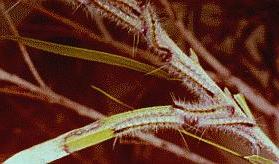
(Photo: Don Herbison-Evans, Bundberg, Queensland)

| Black Spotted Epicoma (previously known as Cnethocampa melanospila) THAUMETOPOEINAE, NOTODONTIDAE, NOCTUOIDEA | (donherbisonevans@yahoo.com) and Stella Crossley |

(Photo: Don Herbison-Evans, Bundberg, Queensland)
A group of caterpillars of this species may often be found on the trunk of a food tree at dusk or dawn. At dusk the caterpillars move up the trunk to feed nocturnally on the leaves of the tree, moving back down to hide in the undergrowth around the tree at dawn.
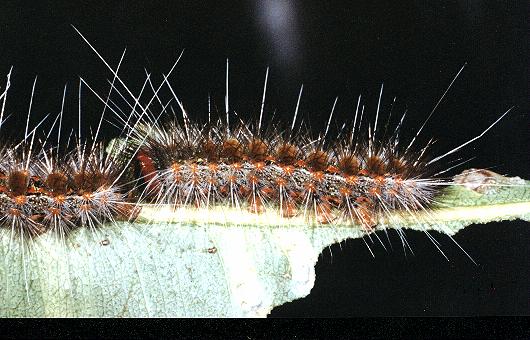
These caterpillars are dark grey and hairy. They have orange legs and orange spots along the sides. They also have two long prominent white hairs which stick out diagonally forward, one on each side of the thorax, and more long white hairs on the tail.
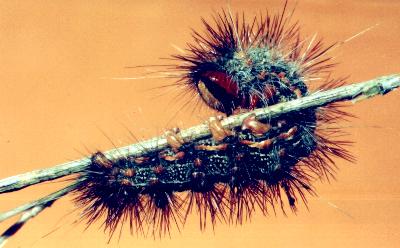
The caterpillars feed on various plants from the family MYRTACEAE, including:
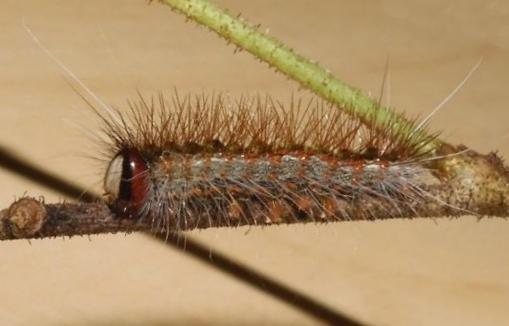
The caterpillars grow to a length of about 4 cms. They are gregarious, and occasionally may be seen in procession, each following the silken thread left by the one in front.
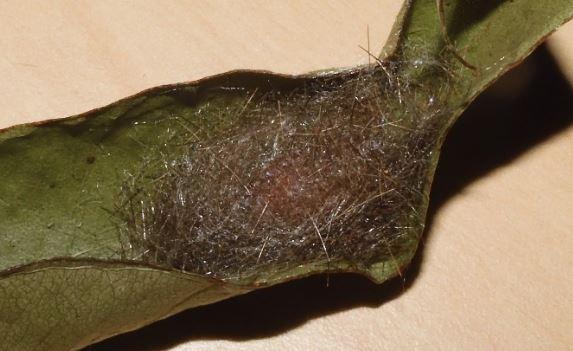
When mature, the caterpillars drop from their tree, and pupate in brown cocoons in the leaf itter. In Melbourne, caterpillars that pupated in February emerged as moths four weeks later.
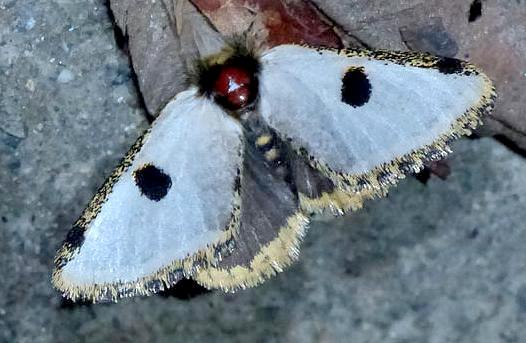
The adult sexes look different. The adult female has forewings that are silvery white, edged in orange and black, each with a large black spot marking the middle. The hind wings are brown with a yellow border. The abdomen ends in a beige hairy tuft. The wingspan is about 3 cms.
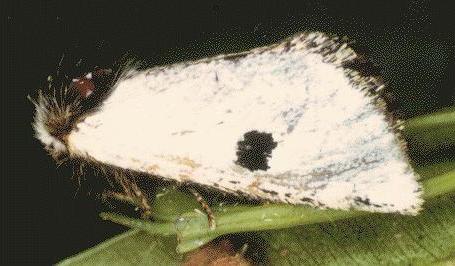
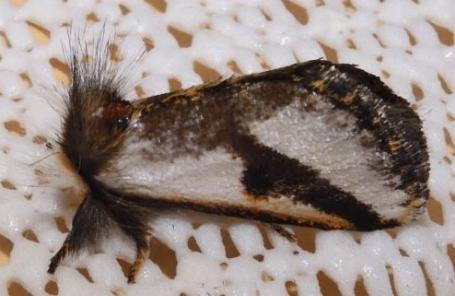
Male
(Photo: courtesy of Maria Rosenfelder, Sunshine Coast Hinterland, Queensland)
The male is similar, but also has a broad dark brown diagonal stripe across each forewing, which is sometimes tangent to the central dark spot. Both have a yellow tuft of hairs on their tails.
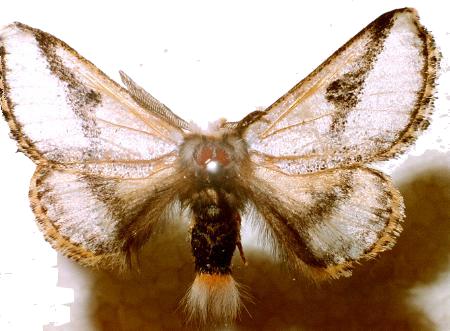
The males and the females of this species have pectinate antennae.
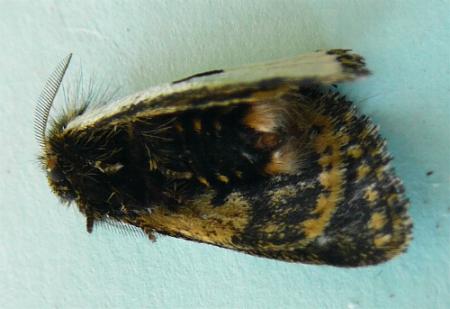
When upset, the adults are inclined to feign a death posture, lying on their side with wings held high and the abdomen curved under.
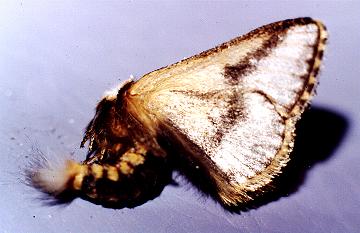
The head is covered in long white scales.
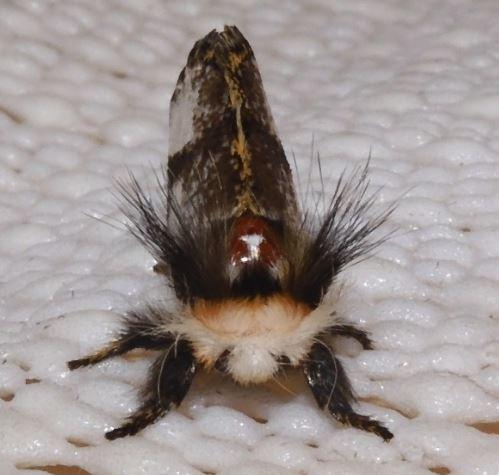
The eggs are laid on a leaf of a foodplant, and covered by the female with hairs from her body.
The caterpillars of this species are difficult to distinguish from those of Epicoma tristis. However on rearing them through to the imago, the adult moths are easily distinguished.
We have found the caterpillars in Bundaberg, Sydney, and in Melbourne, so the species is found in
Further reading :
Ian F.B. Common,
Moths of Australia,
Melbourne University Press, 1990, pl. 17.17.
Pat and Mike Coupar,
Flying Colours,
New South Wales University Press, Sydney 1992, p. 88.
Peter Marriott,
Moths of Victoria: part 2,
Tiger Moths and their Allies - Noctuoidea (A),
Entomological Society of Victoria, 2009, pp. 8-11.
Buck Richardson,
Tropical Queensland Wildlife from Dusk to Dawn Science and Art,
LeapFrogOz, Kuranda, 2015, p. 178.
Hans Daniel Johan Wallengren,
Lepidopterologische Mittheilungen,
Wiener Entomologische Monatsschrift,
Volume 4 (1860), pp. 164-165, No. 22.
Paul Zborowski and Ted Edwards,
A Guide to Australian Moths,
CSIRO Publishing, 2007, p. 175.
 caterpillar |  butterflies |  Lepidoptera |  moths |  caterpillar |
(updated 31 August 2013, 10 February 2025)